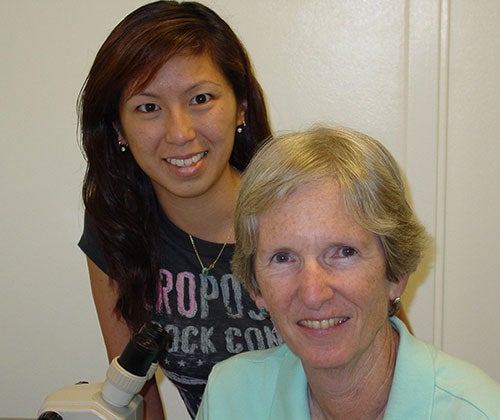UCR uses Stem Cells to Study Toxicity of Cigarette Smoke
Typically, tobacco companies market harm-reduction cigarettes as being safer than traditional “full-flavored” brands, leading many smokers to conclude that the use of harm-reduction brands lowers their exposure to toxicants. But a UC Riverside study now shows that smoke from these “light” or “low-yield” harm-reduction cigarettes retains toxicity and that this toxicity can affect prenatal development.
“Many chemicals found in harm-reduction cigarette smoke have not been tested, and some are listed by manufacturers as safe,” said Prue Talbot, a professor of cell biology who led the study. “But our tests on mice clearly show that these chemicals adversely affect reproduction and associated development processes. The effects are likely to be the same in humans, in which case pregnant women would be particularly vulnerable to the effect of smoke from these cigarettes.” Talbot’s research team used mouse embryonic stem cells (mESCs) as a model for pre-implantation embryos—embryos that have not yet implanted in the wall of the uterus—and compared the toxicity on these cells of cigarette smoke emanating from traditional and harm-reduction brands.
Further, they studied the effects on the mESCs of two kinds of cigarette smoke: mainstream smoke, which is smoke actively inhaled by smokers; and sidestream smoke, which is smoke that burns off the end of a cigarette. They found that both kinds of smoke from traditional and harm-reduction cigarettes are toxic to pre-implantation embryos and can retard growth or kill embryonic cells at this stage of development. Equally surprising to them was their discovery that mainstream smoke and sidestream smoke from harm-reduction cigarettes are more potent than the corresponding smoke from traditional brands of cigarettes.
Next in their research, Talbot and Lin plan to conduct their experiments on human embryonic stem cells. “To relate this research more strongly to humans, we have to use human embryonic stem cells,” Talbot said. “Sabrina has already started working on them, and her preliminary results are similar to those with mESC.” Talbot and Lin were joined in the 18-month study by Vu Tran, who graduated from UCR in 2007 and is now at the Ross University School of Medicine, West Indies.
The UCR Stem Cell Center, which oversees research, teaching, and outreach activities related to stem cells, will work with faculty in UCR’s School of Medicine, and broaden the university’s participation in translational applications of stem cell biology.
Please click here to view the full UCR Newsroom Article.
Please click here to view the cover of Human Reproduction (Image credit: Sabrina Lin).
Please click here to view the full published paper.
